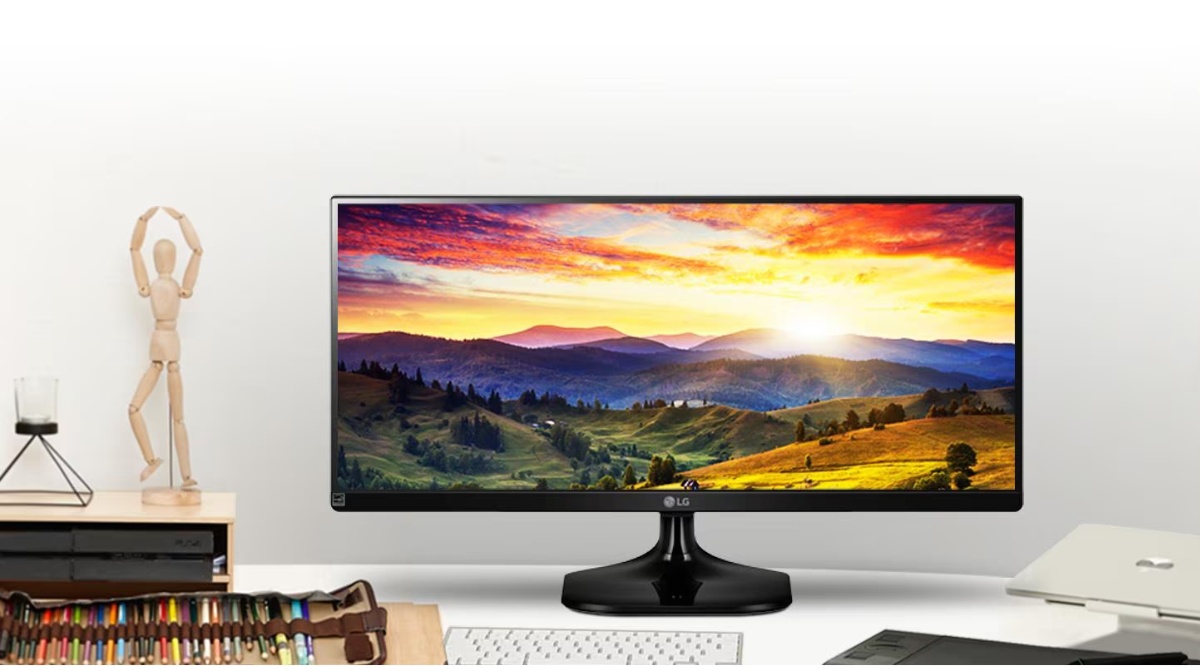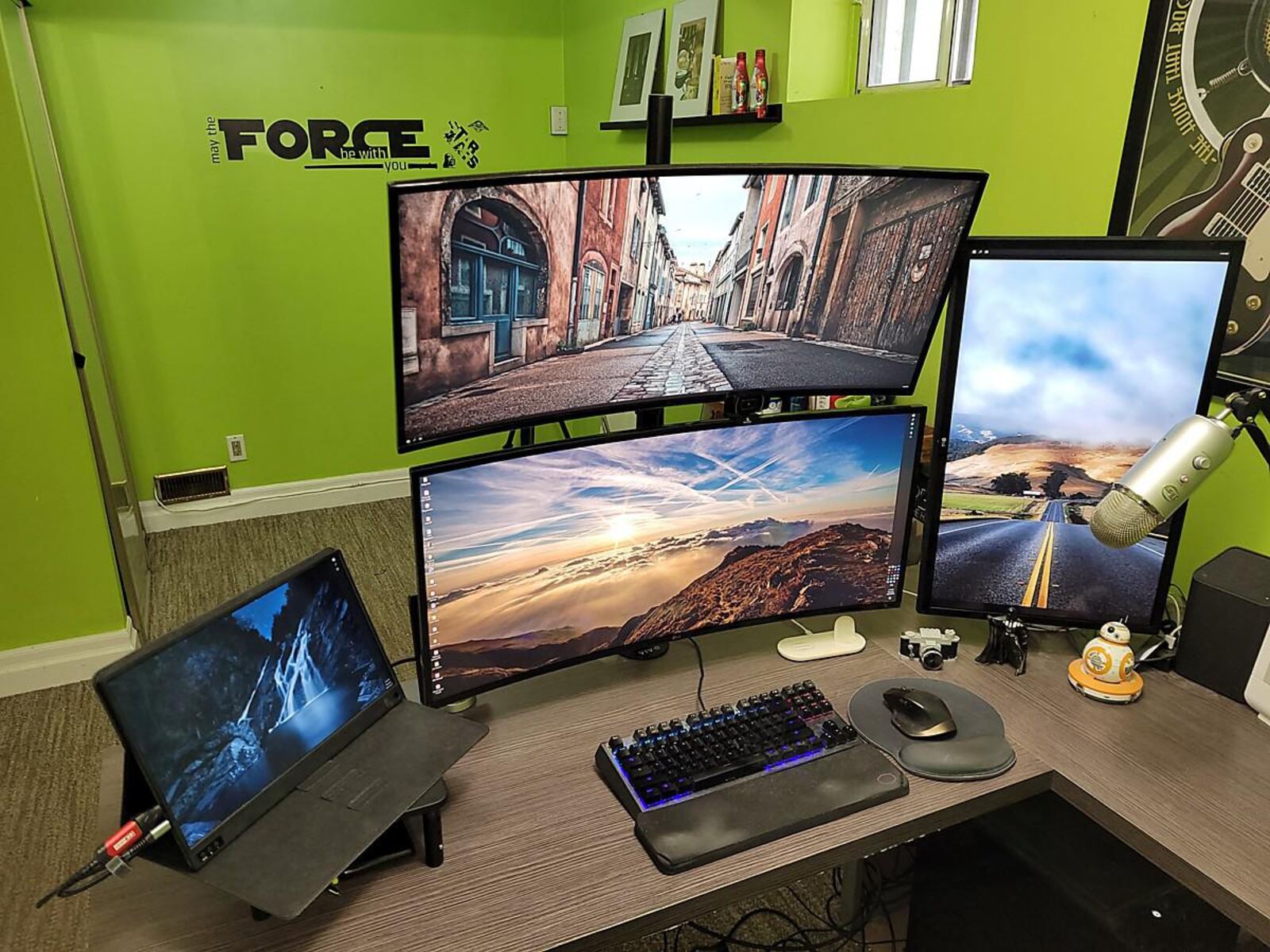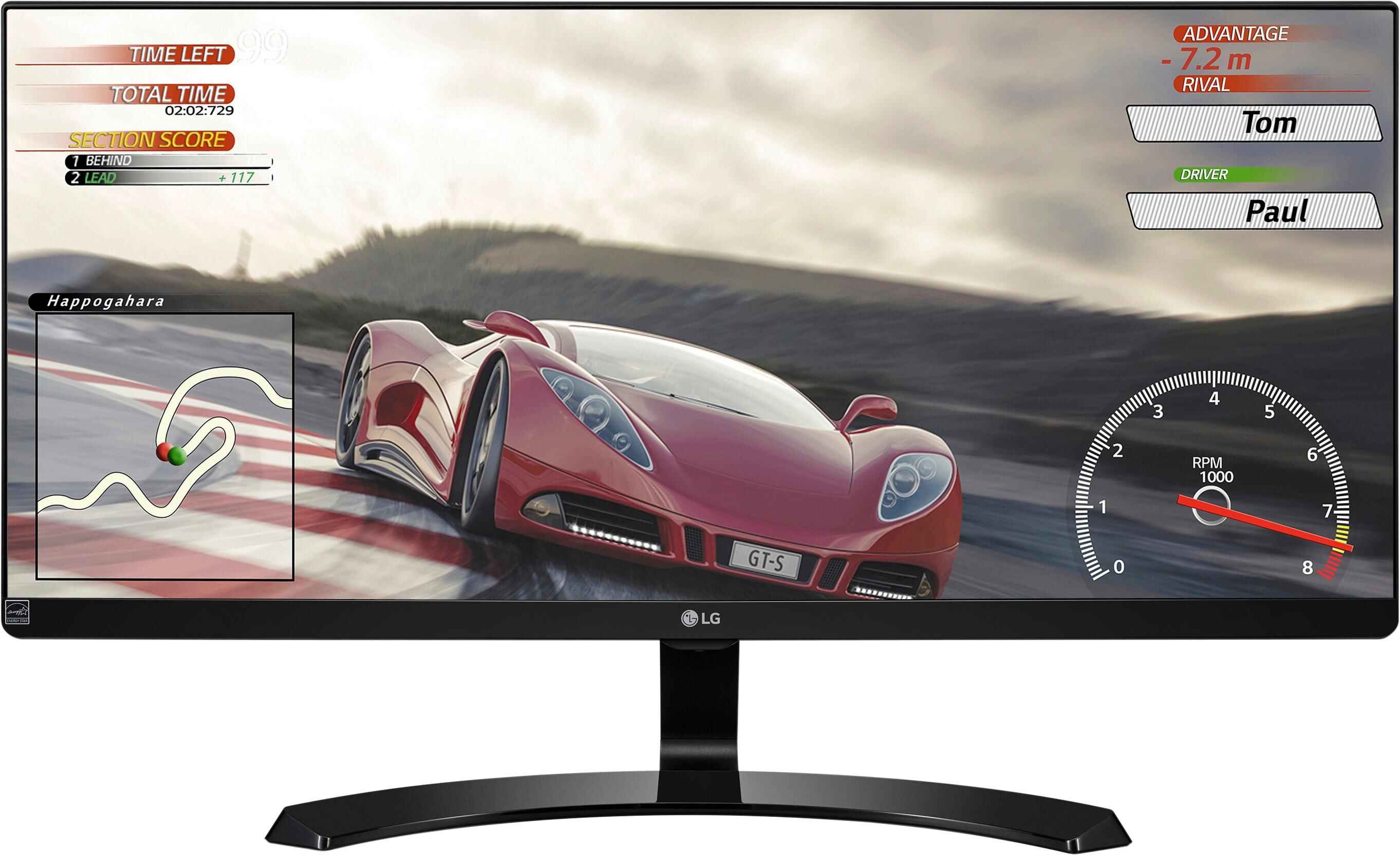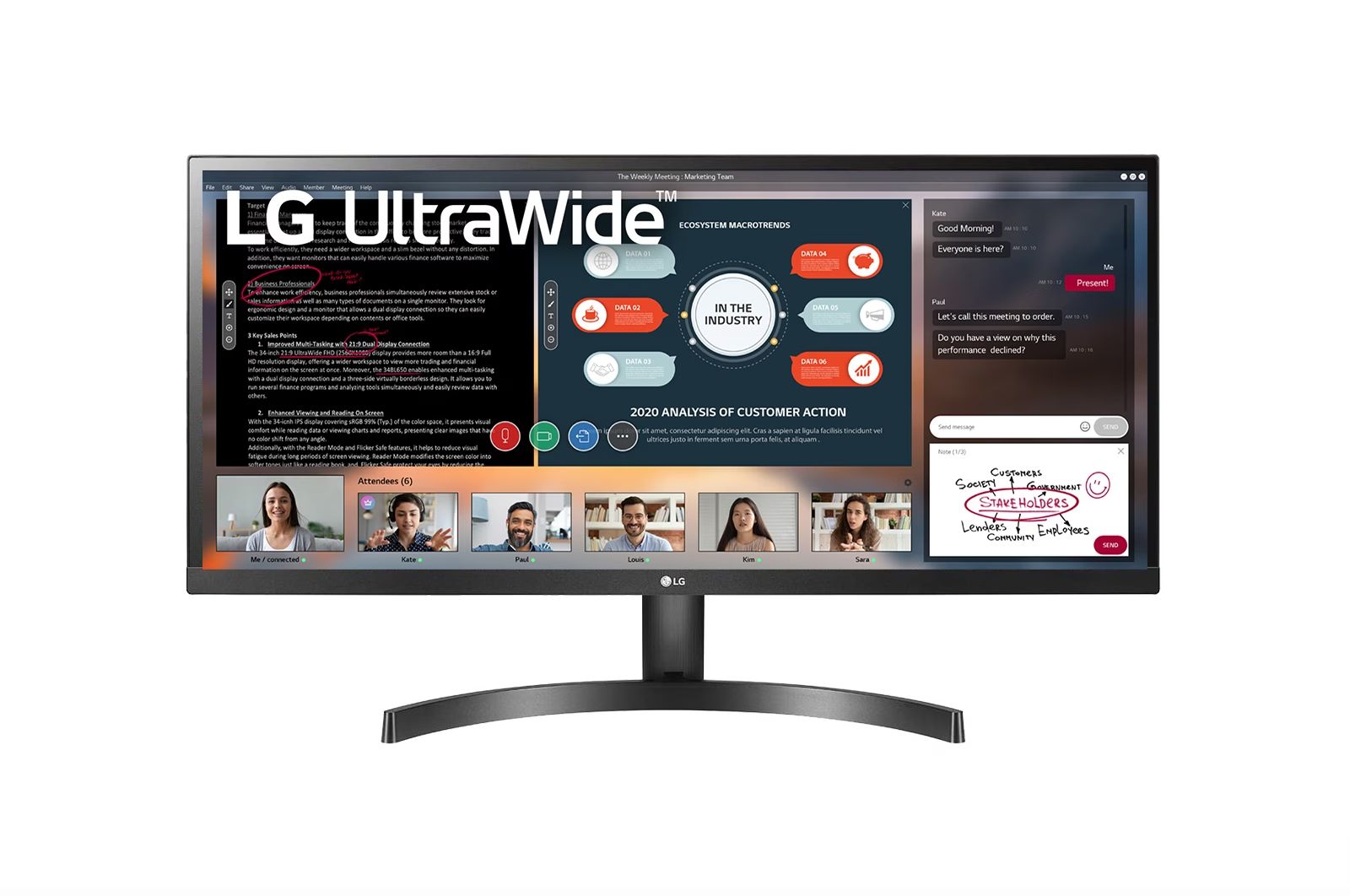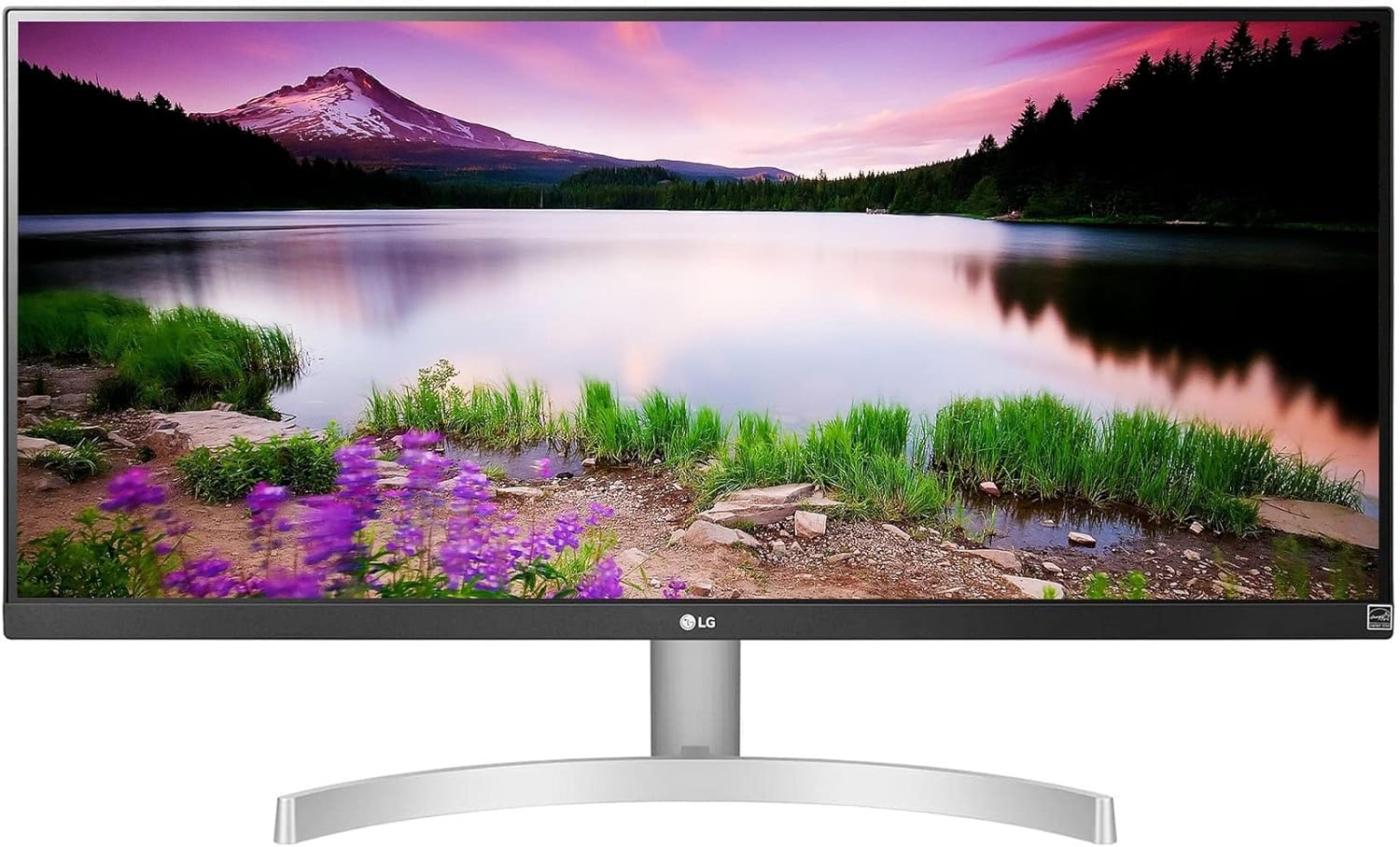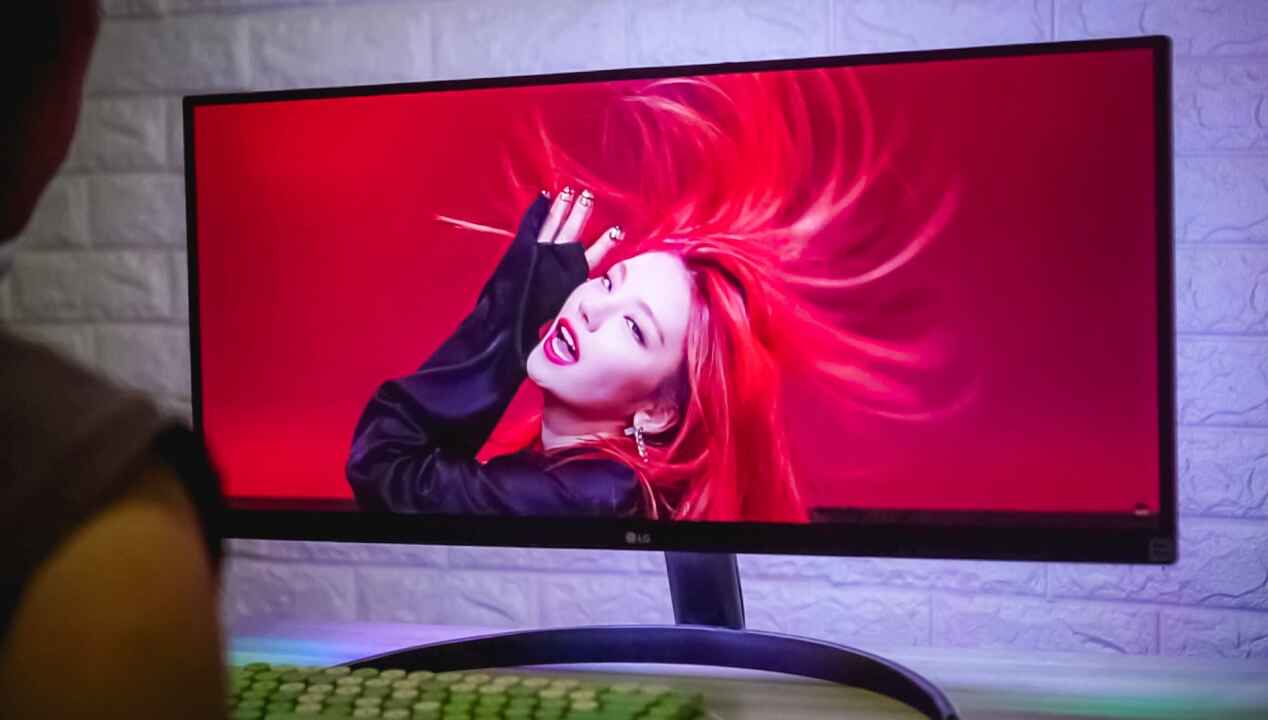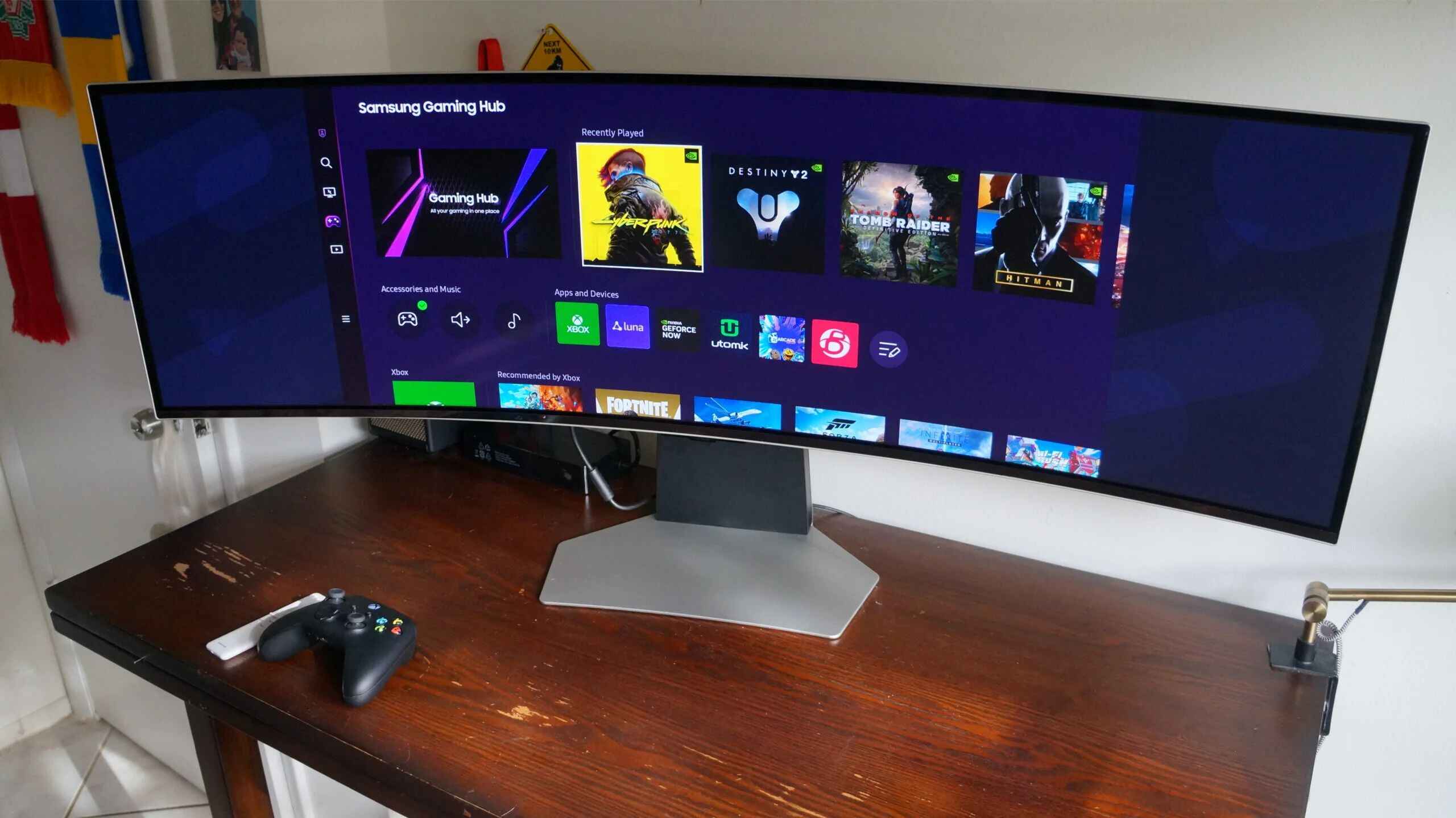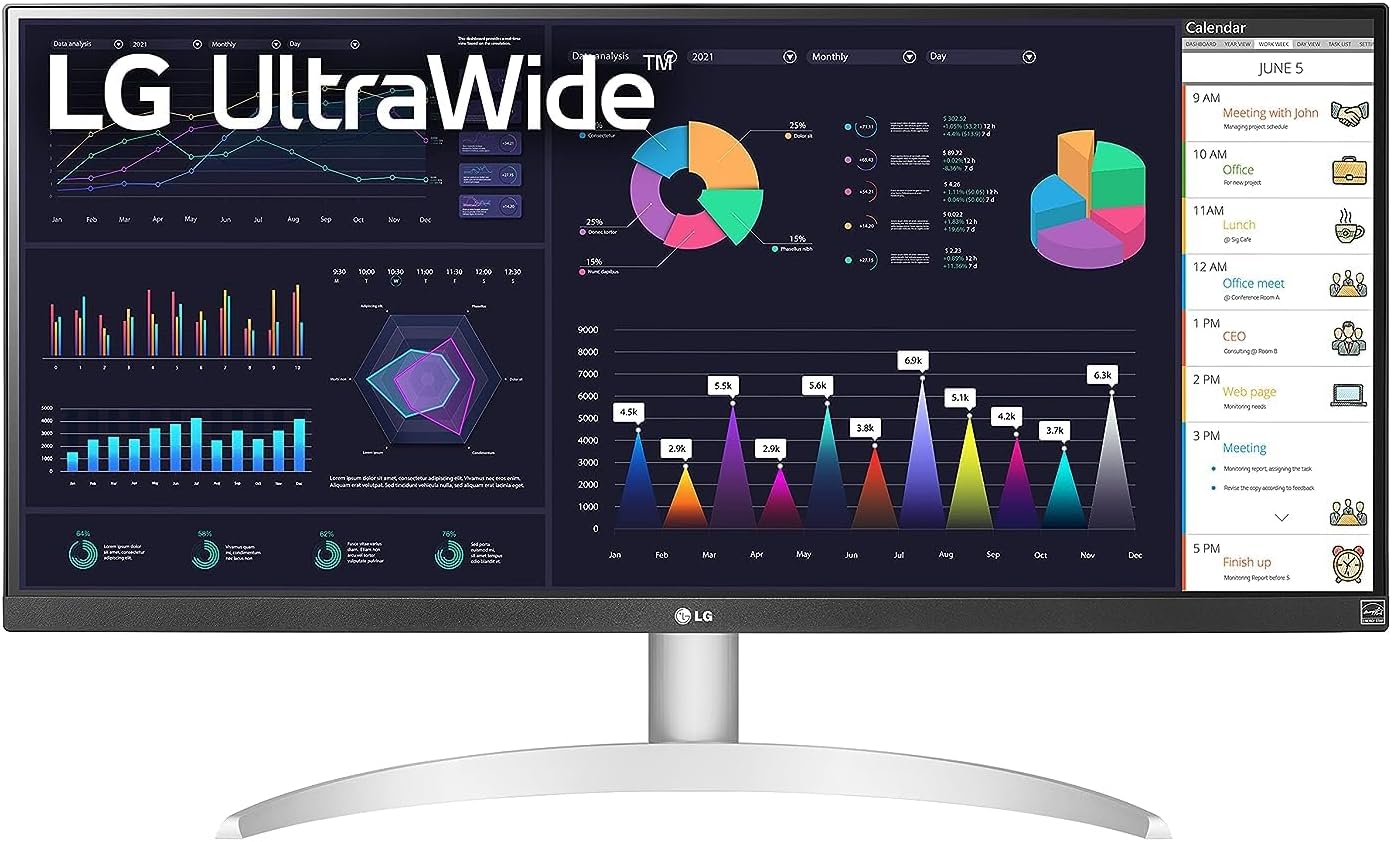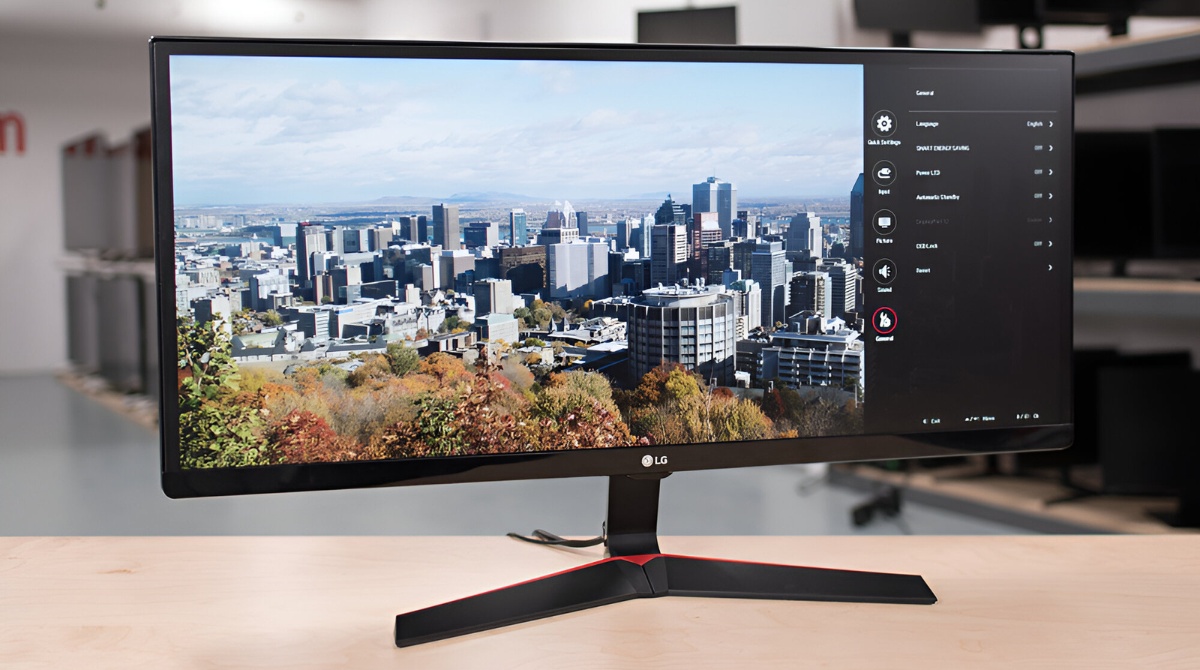Introduction
Welcome to the world of overclocking – a practice that allows you to push your hardware beyond its default settings to achieve higher performance. In this guide, we will focus on overclocking the LG UM58 Ultrawide monitor to unlock its full potential.
The LG UM58 Ultrawide monitor is known for its stunning visuals and immersive gaming experience. However, by overclocking the monitor, you can further enhance its performance and enjoy smoother gameplay and faster response times.
Before we dive into the exciting process of overclocking the LG UM58, it’s essential to have a basic understanding of what overclocking entails. Essentially, overclocking involves increasing the clock frequency or refresh rate of a component beyond the manufacturer’s specifications. This results in faster data processing, improved image quality, and a more immersive user experience.
However, it’s crucial to note that overclocking comes with risks. Pushing your hardware beyond its designed limits can lead to instability, overheating, increased power consumption, and in some cases, even irreversible damage. Therefore, it’s crucial to approach overclocking with caution, following the necessary precautions and understanding the potential risks involved.
In this guide, we will walk you through the process of overclocking the LG UM58 Ultrawide monitor step by step, ensuring you have all the information and resources needed to do so safely and effectively. We will cover compatibility checks, the required tools, necessary preparations, adjusting monitor settings, monitoring the overclock, and troubleshooting potential issues.
So, if you’re ready to take your gaming and visual experience to the next level, let’s dive into the overclocking process for the LG UM58 Ultrawide monitor. But first, make sure you have all the necessary tools and equipment at your disposal, as we will discuss in the next section.
Understanding Overclocking
Before delving into the process of overclocking the LG UM58 Ultrawide monitor, it’s essential to grasp the fundamentals of overclocking itself. By understanding the concepts and benefits of overclocking, you’ll be better equipped to make informed decisions throughout the process.
Overclocking involves increasing the clock frequency or refresh rate of a component beyond its default or factory-set values. In the case of monitors, overclocking allows you to surpass the standard refresh rate, which is typically 60Hz, resulting in a smoother and more responsive display. This improved refresh rate can greatly enhance your gaming experience, providing a competitive edge by reducing input lag and motion blur.
When you overclock your monitor, you essentially force it to refresh the image more frequently per second, resulting in smoother transitions and less motion blur. For gamers, this can be particularly beneficial as it helps maintain a clear image during fast-paced action sequences, enabling quick reactions and precise aiming.
It’s important to note that not all monitors are capable of being overclocked. The LG UM58 Ultrawide, fortunately, comes with built-in options to increase its refresh rate. However, not all monitors offer this flexibility, so it’s crucial to check the specifications and user manual of your monitor to determine if overclocking is an option.
Overclocking, while offering significant performance improvements, does come with its fair share of drawbacks. The increased clock frequency generates more heat, which can lead to higher power consumption and potential stability issues. Overheating can also decrease the lifespan of your monitor, so it’s crucial to monitor temperatures closely and ensure proper cooling.
Additionally, overclocking may void warranties, so it’s important to consider the potential risks before proceeding. It’s always recommended to research the specific overclocking capabilities and limitations of your monitor and follow the manufacturer’s guidelines and recommendations.
Now that you have a solid understanding of what overclocking entails and the potential benefits and risks associated with it, let’s move on to the next section, where we will discuss compatibility checks and the required tools to overclock the LG UM58 Ultrawide monitor.
Checking Compatibility
Before diving into the process of overclocking your LG UM58 Ultrawide monitor, it’s crucial to ensure that your system and monitor are compatible with overclocking. Here are some key factors to consider:
1. Monitor Model: Not all monitor models support overclocking. However, the LG UM58 Ultrawide monitor is known for its overclocking capabilities. To verify if your specific model supports overclocking, refer to the monitor’s user manual or visit the manufacturer’s website for detailed specifications.
2. Graphics Card: To achieve and sustain high refresh rates, your graphics card must be capable of driving the increased workload. Ensure that your graphics card supports the desired refresh rate and has the necessary display outputs, such as HDMI or DisplayPort, to connect to your monitor.
3. System Stability: Overclocking puts additional stress on your system components, including the GPU and CPU. Ensure that your system is adequately cooled and that all components are running within safe temperature limits. Unstable systems may experience crashes, artifacts, or other issues when attempting to overclock the monitor.
4. Display Cable: The cable connecting your GPU to the monitor can impact the maximum achievable refresh rate. Ensure that you are using a high-quality display cable capable of handling the desired refresh rate, such as an HDMI 2.0 cable or a DisplayPort 1.2 cable.
5. Driver and Firmware Updates: Keeping your graphics card drivers and monitor firmware up to date is essential for optimal performance and compatibility. Check the manufacturer’s website regularly for the latest driver and firmware updates for both your graphics card and monitor.
By considering these factors, you can ensure that your system and monitor are compatible with overclocking and can handle the increased workload and potential performance gains.
Now that you have confirmed the compatibility of your system and monitor, it’s time to gather the necessary tools and software to proceed with the overclocking process. We’ll explore these in detail in the next section.
Gathering the Required Tools
Before embarking on the journey of overclocking your LG UM58 Ultrawide monitor, it’s essential to gather the necessary tools and software to ensure a smooth and successful process. Here are the key items you will need:
1. Computer System: Ensure that you have a properly functioning computer system with a compatible graphics card and sufficient cooling. Overclocking puts additional strain on your system, so it’s crucial to have a stable and well-maintained setup.
2. LG Monitor Software: Download and install the official software provided by LG for your specific monitor model. This software will allow you to access and adjust monitor settings, including the refresh rate.
3. DisplayPort/HDMI Cable: Utilize a high-quality DisplayPort or HDMI cable to connect your monitor to the graphics card on your computer. It’s crucial to use a cable that can support the desired overclocked refresh rate.
4. GPU Control Panel: Depending on the graphics card you are using, you may have a control panel software that allows you to adjust the display settings. This software will enable you to fine-tune the overclocked refresh rate and other relevant settings.
5. Stability Testing Software: To ensure the success of your overclocking endeavors, it’s crucial to have stability testing software. Programs such as GPU-Z and AIDA64 can help you stress-test your monitor and check for any potential issues or instability.
6. System Monitoring Software: Install software such as MSI Afterburner or HWMonitor to monitor the temperature, clock speeds, and other vital information of your graphics card and monitor during the overclocking process. This will help you to keep track of the system’s performance and prevent overheating.
By having these essential tools and software ready, you’ll be better prepared to overclock your LG UM58 Ultrawide monitor efficiently and effectively.
In the next section, we will discuss the necessary preparations you should make before diving into the overclocking process. These preparations will ensure a smooth and safe overclocking experience. Stay tuned!
Preparing Your Computer
Before proceeding with the overclocking process for your LG UM58 Ultrawide monitor, it’s important to take the necessary steps to prepare your computer for the task. These preparations will help ensure a stable and successful overclocking experience. Here are the key steps to follow:
1. Update Graphics Card Drivers: Before overclocking, it’s crucial to have the latest drivers installed for your graphics card. Visit the manufacturer’s website and download the most up-to-date drivers for your specific card model.
2. Ensure Proper Cooling: Overclocking can increase the heat output of your graphics card. Make sure you have adequate cooling solutions in place, such as proper airflow, fans, and a well-functioning CPU cooler. This will help prevent overheating and potential instability during the overclocking process.
3. Close Unnecessary Background Processes: Before starting the overclocking process, close any unnecessary applications or processes running in the background. This will free up system resources and ensure the maximum available power is dedicated to the overclocking process.
4. Create a System Restore Point: Creating a system restore point will allow you to revert back to a stable state in case anything goes wrong during the overclocking process. This is a precautionary step to ensure you can easily recover in the event of any issues.
5. Disable Antivirus and Firewall: Temporary disable any antivirus software and firewall to prevent them from interfering with the overclocking process. However, remember to re-enable these security measures once you have successfully completed the overclocking process.
6. Take Note of Default Settings: It’s important to document the default settings of your LG UM58 Ultrawide monitor, including the refresh rate, brightness, contrast, and other relevant settings. This will help you compare the before and after results of your overclocking efforts.
By following these preparation steps, you will ensure that your computer is ready for the overclocking process. Taking these precautions will help minimize the risk of potential issues and maximize the chances of a successful overclock.
Next, we will dive into adjusting the monitor settings to optimize the overclocked refresh rate and enhance your visual experience. Read on to learn more!
Adjusting the Monitor Settings
Now that we have prepared our computer for overclocking the LG UM58 Ultrawide monitor, it’s time to dive into adjusting the monitor settings to optimize the overclocked refresh rate and enhance your visual experience.
1. Open the LG Monitor Software: Launch the official software provided by LG for your specific monitor model. This software allows you to access and adjust various monitor settings, including the refresh rate.
2. Navigate to the Refresh Rate Setting: Look for the option to adjust the refresh rate within the software. The precise location and terminology may vary based on the specific model. Common terms to look for include “Refresh Rate,” “Screen Refresh Rate,” or “Monitor Refresh Rate.”
3. Increase the Refresh Rate: Gradually increase the refresh rate in small increments. It’s recommended to start with a minor bump, such as going from 60Hz to 65Hz initially. Apply the settings and assess the results to ensure stability.
4. Test for Stability: After each increase, run stability testing software like GPU-Z or AIDA64 to check for any anomalies or instability. If the monitor displays artifacts, screen flickering, or the system becomes unstable, reduce the refresh rate to the previous stable setting.
5. Gradually Push the Limits: Continue increasing the refresh rate in small increments, testing for stability after each adjustment. It’s important to find the balance between achieving a higher refresh rate and maintaining overall system stability.
6. Monitor Temperature: Keep a close eye on the monitor’s temperature during the overclocking process. Excessive heat can affect the stability and overall lifespan of the monitor. If the temperature rises to unsafe levels, consider reducing the refresh rate or improving cooling solutions.
7. Document the Stable Refresh Rate: Once you find a stable refresh rate that provides a noticeable improvement without compromising system stability, take note of it. This will serve as the final overclocked refresh rate for your LG UM58 Ultrawide monitor.
Remember, it’s important to exercise caution during the overclocking process and keep in mind the limitations of your specific monitor model. Overclocking beyond the monitor’s capabilities can lead to instability and potential damage.
With the monitor settings adjusted to optimize the overclocked refresh rate, we’re now ready to move on to the next section, where we will discuss monitoring your overclock and performing necessary stability tests. Stay tuned!
Monitoring Your Overclock
Once you have successfully adjusted the settings of your LG UM58 Ultrawide monitor to achieve the desired overclocked refresh rate, it’s crucial to monitor the performance and stability of your setup. This will help ensure that the overclocked settings are working optimally and that your system is running smoothly. Here are some key steps to effectively monitor your overclock:
1. System Monitoring Software: Utilize system monitoring software such as MSI Afterburner or HWMonitor to keep track of critical system information such as GPU temperature, clock speeds, and fan speeds. These tools will provide valuable insights into the performance and stability of your overclocked setup.
2. Monitor Temperatures: Pay close attention to the temperature readings of your monitor and graphics card. Overclocking can increase heat generation, and monitoring temperatures will help prevent overheating. If temperatures reach unsafe levels, consider reducing the overclock or improving the cooling solutions for your system.
3. Run Stability Tests: Perform stability tests using programs like GPU-Z or AIDA64. These tests put your monitor and GPU under high stress, allowing you to check for any artifacts, crashes, or other signs of instability. If issues arise, revert to the previous stable settings or fine-tune the overclocked values accordingly.
4. Testing in Real-World Scenarios: While stability tests simulate intense workloads, it’s also important to test your overclocked monitor in real-world scenarios, such as gaming or multimedia usage. Pay attention to any graphical glitches, screen flickering, or other anomalies during these tests. If you encounter any issues, consider adjusting the overclock or seeking further guidance.
5. Regular Observation: Monitor your setup regularly to ensure the stability and longevity of your overclocked settings. Keep an eye out for any sudden changes in system behavior or performance. If you notice any degradation in stability or visual quality, it may be necessary to readjust the overclock or seek professional assistance.
By actively monitoring your overclocked setup, you can quickly identify any issues or instability and take appropriate action to rectify them. Remember, overclocking involves pushing hardware beyond its intended specifications, so ongoing vigilance is essential for maintaining a stable and reliable system.
In the next section, we will address potential troubleshooting steps to help you overcome any overclocking issues you may encounter. Continue reading to expand your knowledge!
Troubleshooting Overclocking Issues
While overclocking the LG UM58 Ultrawide monitor can significantly enhance your gaming and visual experience, it’s not uncommon to encounter occasional issues or instability during the process. In this section, we will discuss some common troubleshooting steps to help you overcome any overclocking problems you may encounter:
1. Reduce the Refresh Rate: If you experience graphical artifacts, screen flickering, or system crashes, it’s likely that the overclocked refresh rate is too high. Try reducing the refresh rate to the last stable setting or incrementally lower values until the issues are resolved.
2. Adjust Voltage Settings: In some cases, increasing the voltage to your GPU or monitor can help stabilize the overclock. However, this should only be attempted if you are familiar with the intricacies of voltage adjustments and have the proper knowledge to avoid potential damage.
3. Enhance Cooling Solutions: Overheating can cause instability during overclocking. Ensure that your system has adequate cooling, including proper airflow, fans, and a functioning CPU cooler. If temperatures are too high, consider improving cooling solutions or reducing the overclocked refresh rate.
4. Update Drivers and Firmware: Outdated or incompatible drivers and firmware can cause issues during overclocking. Ensure that you have the latest drivers installed for your graphics card and monitor and update the firmware if available. This can address compatibility issues and improve stability.
5. Verify Cable Connection: Loose or faulty cable connections can lead to display issues. Ensure that the DisplayPort or HDMI cable is securely connected to both the graphics card and the LG UM58 Ultrawide monitor. Consider trying a different cable to rule out any cable-related issues.
6. Reset to Default Settings: If all else fails and you encounter persistent instability or issues, it may be necessary to reset your monitor to its default factory settings. This will revert all overclocked settings and allow you to start fresh. Refer to the user manual or the LG website for instructions on resetting your specific model.
7. Seek Professional Assistance: If you are unable to resolve the issues on your own or lack the technical expertise, it’s advisable to consult with a professional or reach out to LG customer support. They can provide further guidance and troubleshooting assistance based on the specific issues you are facing.
Remember that overclocking comes with risks, and not every issue can be easily resolved. It’s essential to approach the process with caution and be prepared to accept the limitations of your hardware. Having a backup plan and maintaining regular backups of your system can further mitigate any potential risks or data loss.
Now that you have a better understanding of how to troubleshoot common overclocking issues, let’s move on to the final thoughts and considerations to wrap up this guide.
Final Thoughts
Congratulations on successfully overclocking your LG UM58 Ultrawide monitor! By pushing its refresh rate beyond the default settings, you have unlocked a new level of performance and visual experience. However, it’s important to reflect on a few final thoughts and considerations:
1. Monitor Longevity: Overclocking involves pushing your monitor beyond its designed specifications, which can increase stress and heat generation. Continuously monitor temperatures and ensure proper cooling to maintain the longevity of your monitor.
2. System Stability: While overclocking can deliver significant performance gains, not all systems are built to handle it. Regularly monitor and stress-test your computer system to ensure stability and address any issues promptly.
3. Risk and Responsibility: Overclocking carries inherent risks, including instability, overheating, and potential damage to hardware. Proceed with caution, follow proper procedures, and accept responsibility for any consequences that may arise from overclocking.
4. Warranty Considerations: Overclocking may void warranties, so be aware of the potential impact on your monitor’s warranty coverage. Consult the manufacturer’s guidelines and understand the terms and conditions before proceeding.
5. Constant Monitoring: Once you have achieved a stable overclock, continue monitoring your system’s performance regularly. Be prepared to make adjustments or revert to default settings if unforeseen issues arise.
Remember, the overclocking process is highly individualized, and results may vary. Monitor models, system configurations, and user experience play significant roles in the success of overclocking. Experiment, iterate, and fine-tune based on your specific needs and capabilities.
Lastly, always stay informed about the latest updates, patches, and advancements in overclocking technologies. Manufacturers often release firmware updates or new software features that can enhance performance and stability.
By following the steps outlined in this guide, you have taken a bold step towards optimizing your LG UM58 Ultrawide monitor. Enjoy the benefits of a higher refresh rate, smoother gameplay, and an immersive visual experience.
Happy overclocking!







